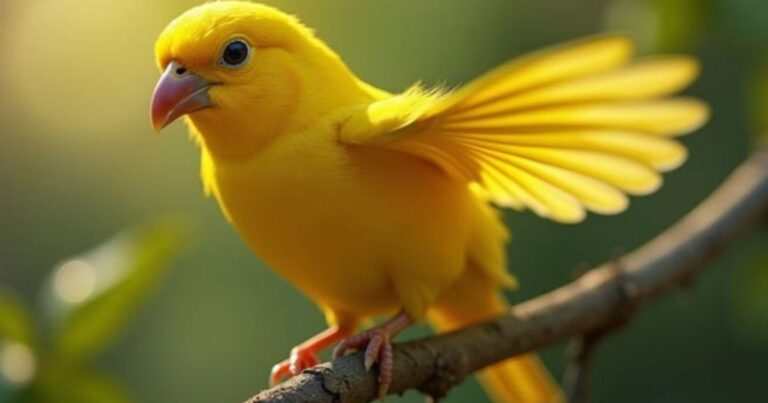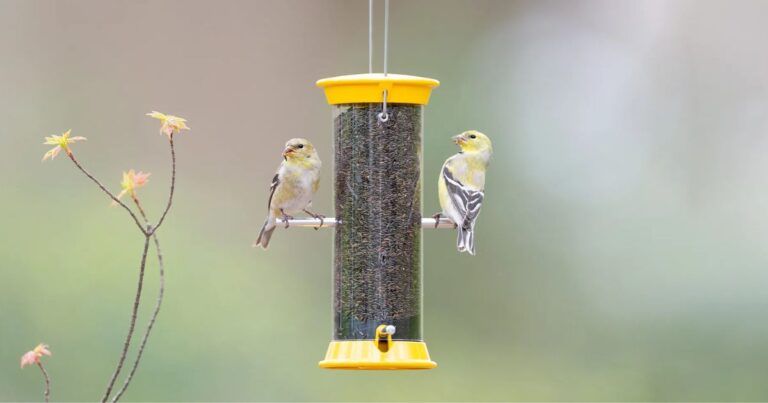Do Birds Kiss? About Birds kiss Best And Unique Information
When we think of affectionate gestures in the animal kingdom, our minds often drift towards the warm embraces of mammals or the playful nudges among pack animals. But what about our feathered friends? Do birds kiss? While they may lack lips like ours, these avian creatures have their own unique ways of expressing affection and bonding. From gentle beak touching to synchronized preening rituals, the world of bird interactions is both fascinating and complex.
We’ll delve into the captivating behaviors that mimic kissing among various bird species. Are these pecks merely practical acts of grooming or do they signify deeper emotional connections. We explore heartwarming tales from lovebirds to parrots, uncovering how these seemingly simple actions play a crucial role in their social structures and relationships.
The Meaning Behind the Bird “Kiss”
The concept of “kissing” among birds extends beyond mere physical contact; it speaks to deep emotional connections and intricate communication systems within their species.
Many parrots display beak-to-beak contact as part of courtship rituals or bonding practices. In these moments, they exchange soft vocalizations and gentle touches that mimic affectionate gestures we understand as kissing.
Observing these interactions allows us to appreciate the complex emotional lives of birds and recognize that such displays serve important evolutionary purposes, enhancing both survival rates and reproductive success through stronger partnerships.
Which Birds Might “Kiss”?
Several bird species engage in behaviors that might look like kissing, including:
Parrots and Cockatoos
Among the avian world, parrots and cockatoos exhibit some of the most fascinating social behaviors, including what can be interpreted as “kissing.” These intelligent birds often engage in preening behaviors that simulate affectionate gestures. Parrots, known for their colorful plumage and playful nature, will frequently touch their beaks together a behavior not only seen during interactions with mates but also among bonded companions. This act fosters a sense of connection and solidarity within their social groups.

Cockatoos, recognizable by their striking crests and vocal prowess, take this display a step further. They use billing gently tapping beaks as a way to strengthen pair bonds or establish dominance within their flock. During these intimate moments, you might notice them softly vocalizing or bobbing their heads in rhythm with each other’s movements. Such intricate displays reveal a complex language of romance that surpasses mere survival instincts.
Pigeons and Doves
Pigeons and doves, often mistaken for one another due to their similar appearances, exhibit some surprisingly endearing behaviors that could be likened to kissing.
These birds engage in a unique courtship ritual known as “billing,” where they gently touch their beaks together, creating an intimacy reminiscent of a human kiss.

This behavior is not just romantic; it plays a crucial role in strengthening pair bonds and fostering trust between mates.
The gentle interplay of their heads and preening each other’s feathers further underscores the depth of these affectionate gestures.
Eagles
When we think of affectionate interactions in the avian world, eagles may not top our list. During courtship, bald eagles perform intricate aerial displays and mutual preening rituals that emphasize their close pair bonds a behavior hinting at a deeper emotional connection much like a kiss among humans.
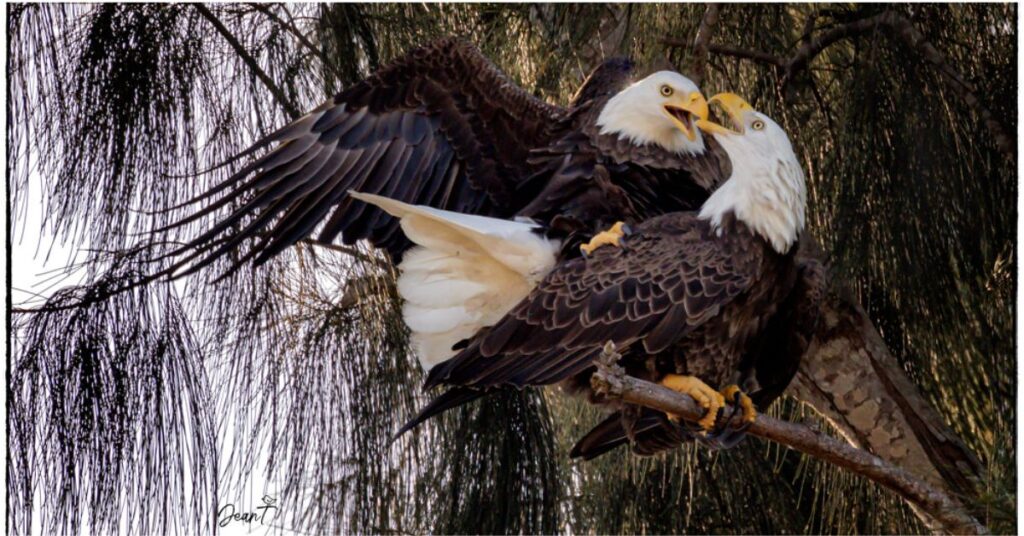
Another interesting aspect is the role of beak tapping among eagle pairs. While they certainly aren’t pecking away romantically, this gentle contact serves as a vital part of their courtship ritual. It’s reminiscent of couples who savor moments of togetherness except here it signifies trust and cooperation in nesting duties rather than romantic devotion.
Swans
Swans are often heralded as symbols of love and fidelity, making them prime candidates for the notion of avian affection. These elegant birds engage in a behavior known as “billing,” where they gently rub their necks against each other or touch beaks.

This intricate display mimics a kiss and signifies strong bonds between mates. Swans mate for life, reinforcing their commitment through such tender interactions, which can evoke feelings of romance reminiscent of human relationships.
Are They Actually Feeding One Another?
In the animal kingdom, the act of feeding among species can evoke a deeper narrative than mere survival; it often symbolizes complex social bonds and reproductive strategies. While many might assume that only parental care behavior is prevalent during breeding season, fascinating instances of reciprocal feeding emerge.
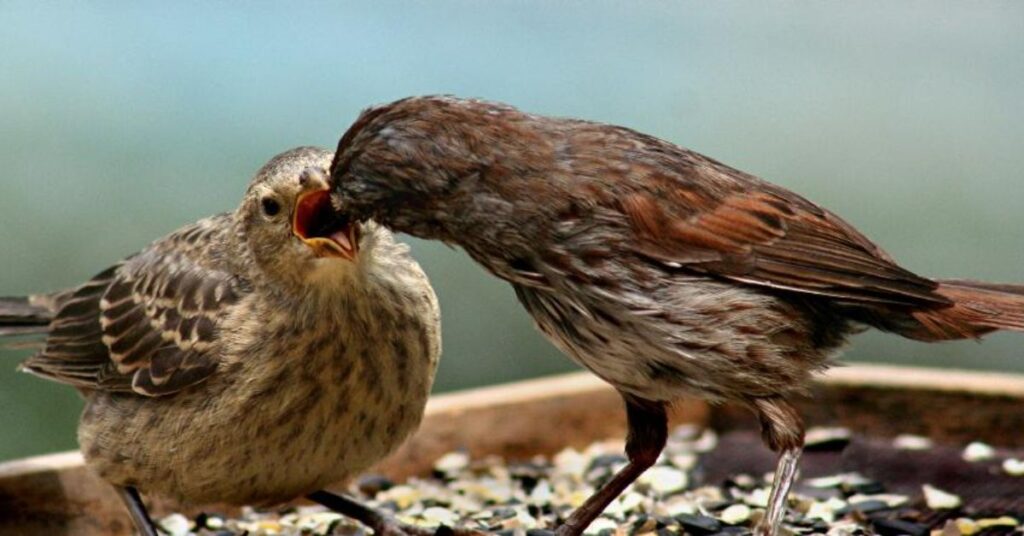
In various bird species, for instance, mates will engage in intricate courtship rituals where they feed one another this behavior not only strengthens social ties but also serves as an assurance of fitness and resource availability crucial for nurturing future offspring.
When is This Behavior Most Common?
Kissing, a behavior seen in various bird species, often peaks during specific seasons or environmental conditions. Stormy weather or the onset of migration can further amplify kissing behavior. Birds may engage in more pronounced displays to rally their flock for cohesive movement or to navigate through challenging conditions.
Periods of food scarcity can trigger competitive kissing as birds vie for limited resources, resulting in increased visibility of this phenomenon across various habitats.
By understanding these behavioral patterns, birdwatchers can better appreciate the intricate dynamics at play within avian communities and become more attuned to the natural rhythms that influence these captivating interactions.
Do Birds “Kiss” Their Young?
While we often associate kissing with affectionate bonding in humans, the concept of birds kissing their young may reveal a deeper, fascinating communication method within avian parenting.
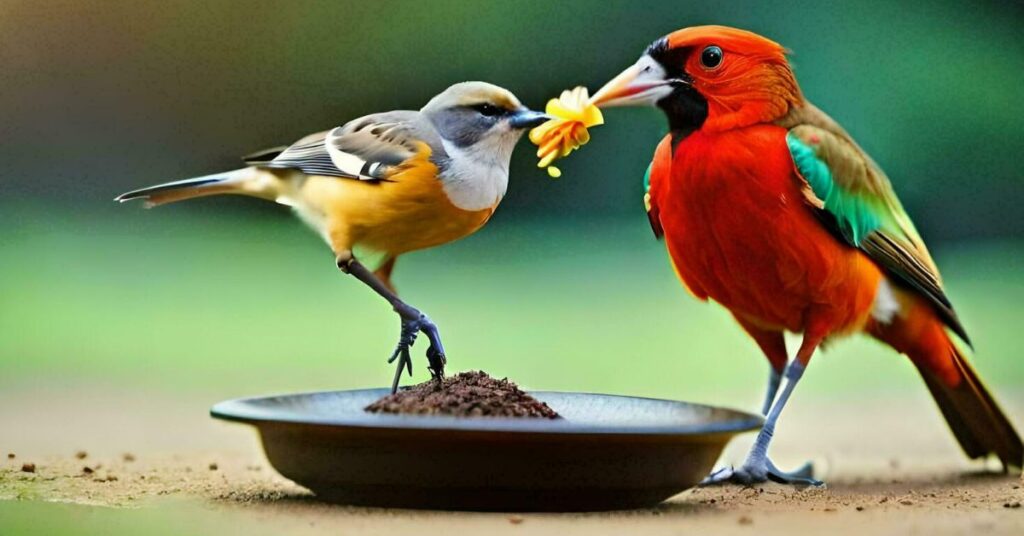
Instead of physical beaks touching in a romantic manner, many bird species engage in behaviors that resemble kissing such as feeding their chicks through regurgitation.
This act is not merely about nourishment; it strengthens the emotional connection between parent and chick, ensuring the survival of the next generation.
And Also Read Quelea: The Most Abundant Wild Bird
Conclusion
While Do Birds Kiss may not kiss in the traditional sense that humans do, their displays of affection through beak touching and preening serve as significant forms of bonding. These behaviors highlight the complex emotional lives of avian species and their social interactions within flocks or pairs. Understanding these unique gestures can deepen our appreciation for the diverse ways that animals express love and connection.
FAQ’s
1. Do birds actually kiss?
While birds don’t kiss in the human sense, they do engage in behaviors like beak rubbing and preening that resemble kissing.
2. What does it mean when birds touch beaks?
Beak touching or rubbing is often a sign of affection, bonding, or social interaction among birds.
3. Are there specific bird species that are more affectionate?
Yes, species like parrots and lovebirds are known for their affectionate behaviors and strong social bonds.
4. Can birds show affection to humans?
Many pet birds can form strong attachments to their owners, displaying affection through behaviors like nuzzling or gentle pecking.
5. Do birds kiss each other in the wild?
In the wild, some bird species display affectionate behaviors towards mates or flock members, which may include beak touching.


